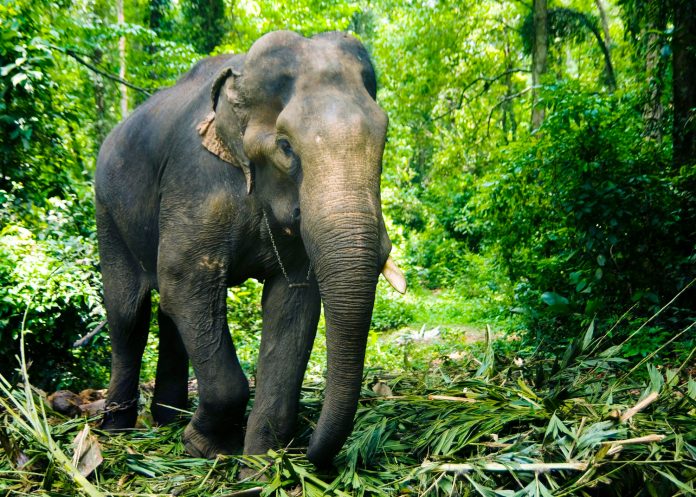India, just like its resources and culture, is rich in biodiversity. The variety of flora and fauna that it possesses is hardly found anywhere else in the world. India is the only country in the world that has four major biodiversity hotspots. Its perfect geographical location makes it an ideal habitat for numerous species of plants and animals, some of which are rare and endemic. Let us see the biodiversity hotspots of India and what we as a community can do to preserve them.
The Western Ghats
The Western Ghats, also known as the Sahyadri range represent the hills that run along the western coast of the Indian peninsula. These ghats or hills receive a decent amount of rainfall on account of being situated near the ocean. This region includes two types of forests, deciduous and rainforests, with around 77% and 62% rare species of amphibians like the pig-nosed purple frog and reptiles like caecilians, and is home to 450 species of birds, 260 reptiles, 175 amphibians, and 140 species of mammals including tigers, black panthers, leopards, lion-tailed macaques, and other endangered species, hence making it to the UNESCO World Heritage Site list.
The flora of this region consists of about 6000 vascular plants that include more than 2500 genera. In addition to this, around 3000 plants found in the Western Ghats are endemic. This region is where spices like black pepper and cardamon most likely originated from. Naturalists are still discovering new species of flora and fauna in the Western Ghats. But sadly, this diversity lies on the verge of extinction due to the exploitation of forest resources and the shrinking of forest area.
The Himalayas
The mighty Himalayas are the pride of India, with their amazing mountain peaks, and phenomenal natural beauty. This mountain range is the highest in the world and also the origin point for some of the major river systems of India. The biodiversity of this region, just like its mountain peaks, is vast and unique, that includes 10000 species of plants, and 300 mammals, like Asiatic wild dogs, black bears, snow leopards, sloth bears, and blue sheep, with 163 endangered species like the one-horned rhinoceros, and wild Asian water buffalo.
This biologically diverse region also includes some 45 endangered species of mammals, 12 amphibians, 3 invertebrates, 50 birds, and 17 reptiles. These species include Cheer pheasant, Himalayan vulture, Western Tragopan, White-bellied heron, Himalayan vulture, and relict dragonfly. The species of flying squirrel called Nmadapha, found in the Himalayas is almost on the verge of extinction.
The Indo-Burma region
As the name suggests, this hotspot includes parts of many countries including India, Myanmar, China, Laos, Cambodia, Vietnam, and Thailand. The part of India that comes under this biodiversity hotspot is the North-Eastern region, the Gangetic plains, and some areas around the Brahmaputra River. The Northeastern states of India are home to 17 crop species that make up 47% of the crop diversity of India, with 800 endangered species of flora. The region also supports some rare species as well as medicinal plants. It has a diverse fauna that includes 236 species of fishes, 3624 insects, 541 birds, and 160 species of mammals including Asian elephants, Sangai, one-horned rhinoceros, wild water buffalo, and all species of bears. Naturalists have also found new species of animals like leaf deer and Tawang macaque in this region. However, illegal wildlife trade, encroachment and habitat loss due to deforestation is leading to biodiversity depletion in the Northeast.
Sundaland
The biodiversity hotspot of Sundaland lies in South-East Asia which includes countries like Thailand, Singapore, Indonesia, Malaysia, Brunei, and the Indian islands of Nicobar, going up to the tectonic plates under the Indian Ocean. The Nicobar Islands are covered with tropical rain forests, mangroves, seagrass beds, and coral reefs distributed all over the area. Nicobar Island is a protected area for many endemic plants and animals including saltwater crocodile, Malayan box turtle, giant leatherback sea turtle, and the Nicobar tree shrew. This region is also home to the indigenous Nicobarese and Shompen tribes. However, we are losing this biodiversity to poaching and a steady loss of forest cover.
Some of the major reasons for biodiversity depletion in these hotspots are the destruction of habitat due to human activities, poaching, pollution, climate change, and environmental degradation. These factors are affecting our flora and fauna in more ways than we can imagine. And hence, it’s high time that we, as a community, step up and work for their conservation, instead of just relying on the government and other organizations. The real power of saving our green cover and fauna lies in the hands of us people. Our country is home to nearly 8% of global biodiversity, which means that a huge responsibility lies in the hands of us Indians. We, as the citizens of India, should take measures such as ecotourism and ecological restoration as well as create awareness among the masses so that interest is ignited in saving our rich forests.





























